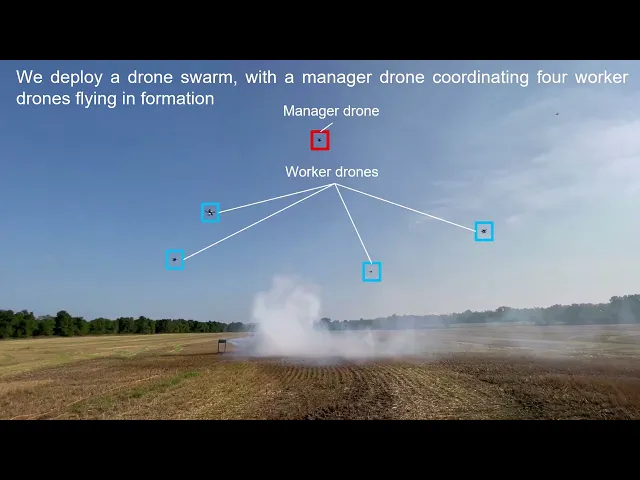The healthcare industry is at a critical inflection point. With rising costs and growing demand, the pressure on global healthcare systems is significant. AI tools hold immense potential to transform the healthcare system, but their impact will ultimately depend on how thoughtfully and effectively it is implemented.
AI’s potential to cut costs through prevention and efficiency
While developing AI in healthcare requires significant up-front capital investment, the long-term potential for savings is significant – particularly when it comes to prevention and early detection.
Traditional healthcare models operate on a reactive basis, with patients only seeking treatment after developing symptoms. This means intervention often comes when conditions have already progressed to later, more complex stages, significantly increasing the costs of treatment.
Take heart disease, for example: by the time a patient has a heart attack, the costs required, from emergency care to long-term recovery, are substantial.
But with AI, we can potentially flip this model from reaction to prediction and prevention by intervening before problems become critical. Tools like automated image analysis can catch cancers at earlier stages, and predictive algorithms can flag people at risk of diabetes or heart disease years before symptoms emerge.
CEO and Founder of Numan.
These kinds of early insights not only improve patient outcomes but also reduce the financial burden on healthcare systems.
For the NHS, which operates under tight budgets and regulatory constraints, the challenge is to find ways to adopt innovation in a cost-efficient way. This is where private sector investment plays a key role in supporting the development of AI tools that can ease the pressure on public systems.
AI tools that leverage innovation in healthcare are playing an increasingly important role in improving efficiency. Through AI powered customer support chatbots, patients can find the right care pathway more quickly, potentially reducing waiting times and unnecessary appointments.
By managing these routine queries, AI systems are freeing up clinicians’ time to allow them to focus their time on complex cases.
AI isn’t here to replace healthcare professionals but to support them, acting as a co-pilot to help deliver faster, smarter, and more sustainable care.
Why generalist AI won’t go the distance
There is increasing recognition that a single AI assistant can’t solve every patient need.
Healthcare demands personalization, not generalization. A coordinated approach using specialist AI agents for specific areas such as mental wellbeing or nutrition, paired with human-led clinical advice and coaching, is key. A system that handles too many different areas can lead to hallucinations and also make safety guardrails harder to maintain.
The answer involves specialist AI agents for specific domains, using agents that can collaborate behind the scenes for unified patient experiences.
It’s critical that specialist agents across nutrition and wellbeing work together behind the scenes to help provide a more cohesive experience for patients.
As needed, these agents will direct patients to the right clinicians or health coaches for more specialized health coaching or treatment support. This mirrors current healthcare delivery with specialists and multidisciplinary teams, not just general practitioners.
The critical challenge remains supporting patients on their health journey without providing medical advice. AI excels at coaching on exercise, diet, and medication reminders. However, complex diagnostic decisions and crisis interventions must be escalated immediately to qualified clinical professionals.
A key part is the use of hybrid models that triage queries, using AI to handle coachable topics while complex cases direct instantly to health professionals.
This hybrid model creates safer AI deployment. Rather than replacing clinical judgement, specialist agents improve delivery by handling routine queries and frees up clinician’s time to focus on complex cases requiring human insight and decision-making.
Making AI safe for real-world use
As large language models (LLMs) and generative AI become more widely used in healthcare, we must take a thoughtful, multidisciplinary approach to safety. Healthcare companies must recognize that AI tools don’t operate in a vacuum. They interact with sensitive patient data, such as Electronic Health Records, and influence critical care decisions. Robust monitoring and evaluation systems are essential.
Best practice includes implementing continuous testing both before and after deployment, rigorously assessing AI responses for safety, accuracy, and relevance across key areas like symptom management, mental health, and medication guidance.
This kind of ongoing evaluation allows teams to quickly identify and address issues before they affect patients. The blend of AI efficiency and human judgement not only ensures patient safety but builds trust.
Beyond technology, successful AI in healthcare requires collaboration across multiple disciplines. This combined approach will help to design systems that are not only accurate but also usable and safe.
Transparency is key, both patients and healthcare providers need clear communication about AI’s capabilities and limitations.
For example, we’ve invested heavily into cybersecurity and data privacy, because trust is earned not only through performance but also through transparency and protection. Patients need to understand what the AI can do, where its limits are, and how it supports rather than replaces clinical care.
True personalization isn’t just a goal, it’s a requirement, and achieving it safely requires strong data pipelines and rigorous oversight. But by embedding these principles into AI development and deployment, healthcare organizations can harness AI’s potential to deliver safer, more effective care while building lasting trust with patients.
Conclusion: AI as healthcare’s strategic partner
Scaling an AI assistant in healthcare isn’t easy, especially when aiming to reduce costs without compromising quality.
Looking ahead, the future of AI in healthcare depends on thoughtful deployment, focusing on prevention, efficiency and adopting specialist systems rather than a one-size-fits-all solution.
AI won’t replace healthcare professionals, nor should it, but it will act as a strategic partner, enhancing human capabilities, improving system efficiency, and enabling personalized care at scale.
The economic benefits are substantial but require patience, investment, and a commitment to doing implementation right rather than fast. Success will be measured not only by technological sophistication, but also by the impact on patient outcomes and healthcare sustainability.
By embracing these critical insights, we can ensure AI becomes healthcare’s greatest tool for delivering better, more accessible, and more affordable care to everyone who needs it.
We’ve listed the best medical practice management software.
This article was produced as part of TechRadarPro’s Expert Insights channel where we feature the best and brightest minds in the technology industry today. The views expressed here are those of the author and are not necessarily those of TechRadarPro or Future plc. If you are interested in contributing find out more here: https://www.techradar.com/news/submit-your-story-to-techradar-pro








































